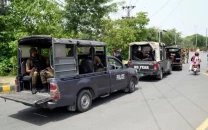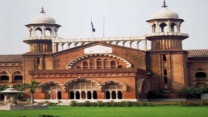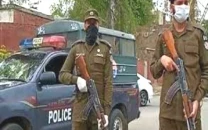Budget 2017-18: Women development sees marked 7% increase
A significant portion of the allocation, Rs635 million, will fund six new schemes

PHOTO: FILE
The 2017-18 budget for women development saw an increase of more than 7% compared to the Rs629 million announced in 2016-17.
A significant portion of the budget, Rs635 million, will fund six new schemes, while only Rs39 million will be used for two ongoing schemes.
According to the budget documents, the policy objectives of the schemes are to ensure effective safeguarding of women’s rights within the constitutional and legal framework. Furthermore, it hoped to introduce a new legislative framework for women’s rights as and when required.
The schemes are aimed at expanding opportunities to improve the socio-politico-economic status of women, with a special focus on rural areas.
Some other objectives are gender mainstreaming in public to ensure the effective representation of women in political and administrative spheres, along with access to formal legal aid and the judicial system.
The six new schemes include monitoring and tracking of the chief minister’s women empowerment initiatives through an allocation of Rs75 million.
A budget of Rs100 million has been dedicated for training and creating awareness about the local bodies’ women caucus on the divisional level. At the same time, another Rs100 million will go towards supporting working women’s hostels on the district level.
Similarly, Rs20 million have been set aside for awareness campaigns on the second phase of the chief minister’s package on women empowerment.
Around Rs210 million have been allocated for the Punjab Working Women Endowment Fund, while Rs130 million would be dedicated to Punjab Commission on the Status of Women (PCSW).
Despite these measures, a Human Rights Commission Report for 2016 stated the government focused more on protective rather than preventive measures to safeguard women.
In the women’s section of its Rights of the Disadvantaged report, it was highlighted that little was being done to create an environment for women to reach their full potential.
According to the report, several legislative developments had taken place to strengthen the women protection system of the country, but there was no significant decline in the number of cases of violence against women. Even maternal health was suffering and women lagged behind men in terms of education. All these elements were allied with few opportunities to gain economic independence.
The report further stated that for the second consecutive year in 2016, Pakistan was ranked at 143 out of 144 countries in the gender inequality index. Similarly, the World Economic Forum's (WEF) Global Gender Gap Report 2016, released on October 25, 2016, declared Pakistan as second last in terms of gender equality and the lowest scoring country in South Asia.
In terms of pay parity, the report revealed that up to 30% of female graduates earned below the minimum wage of Rs10,000 per month compared to only 10% of male graduates.
Moreover, 77% of women in the informal sector earned less than the minimum wage of Rs10,000 compared to 42% of men (in 2013-14). Men in Pakistan earned 71%more than women on average.
According to the report, the first gender parity report of Punjab, released in March, revealed a 20% increase in cases of violence against women from 2012 to 2015. The report stated that incidents were higher in districts where the literacy rate was 50% or lower. The areas included Rahimyar Khan, Sargodha, Multan and Vehari. It stated an overall decline in the number of convictions in the cases of violence against women, falling from 378 convictions in 2012 to only 81 in 2015.
Published in The Express Tribune, June 18th, 2017.



















COMMENTS
Comments are moderated and generally will be posted if they are on-topic and not abusive.
For more information, please see our Comments FAQ